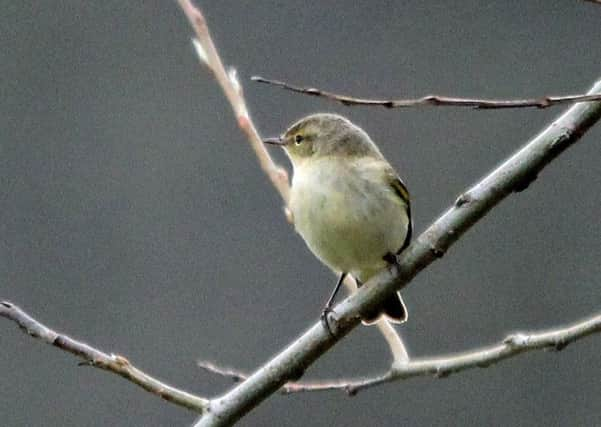Country & Coast: Perfect pronunciation of a species back in abundance


At Timble Ings above the Washburn Valley near Blubberhouses last week one of them helpfully declared its identity. Otherwise, from a distance, its small size and olive-brown plumage simply suggested that it was one of a dozen or so members of the warbler family.
The bird had just made the flight from its wintering grounds in North Africa, and to my ears its two-note call sounded like repetitive sneezing, as if the unseasonal temperatures had given it a cold. But I was hearing the call that provided its name - “chiff-chaff-chiff-chaff-chiff-chaff”.
Advertisement
Hide AdAdvertisement
Hide AdFor me at least, the onomatopoeic chiffchaff raised the curtain on this year’s spring. The bird usually arrive a couple of weeks ahead of swallows and a full month before that official harbinger of spring, the cuckoo.
Some chiffchaffs decide to stay put in autumn, mostly in the south of England, but most of them migrate and then reappear in mid-March.
This year they are late by a week or so, the earliest arrivals I know about being seen at Flamborough on March 22 and two heard at Ben Rhydding in Wharfedale the same day. That’s still earlier than a few decades ago, when the first week of April was held to be the main arrival time.
There is a better chance of hearing and seeing chiffchaffs these days, because the species has experienced a dramatic increase in population, so much so that it has been placed on the international conservation ‘Least Concern’ list. And according to the British Trust for Ornithology, chiffchaff numbers in the UK have more than doubled since the mid-1990s.
Advertisement
Hide AdAdvertisement
Hide AdA major factor in this success is that their migration is relatively short, and the route does not involve the arduous crossing of the Sahara Desert, where drought and habitat loss have contributed to the decline of species like turtle doves, cuckoos and nightingales.
Certainly, I am hearing chiffchaffs in new places all the time, even in urban locations. Last year I heard one in the car park of a supermarket in Bingley, and they are now calling from the trees next door to my gym at Shipley.
If it wasn’t for the two-note call I suspect most birdwatchers would find it hard to distinguish the chiffchaff from its sibling, the willow warbler.
Although common, that species has not fared so well in recent years because its migration route takes it across the Sahara.
Advertisement
Hide AdAdvertisement
Hide AdIt has now been given an Amber conservation status, indicating that there are worries about its moderate decline in breeding over the last 25 years.
They tend to arrive a bit later than chiffchaffs. One year, an influx of 300 willow warblers was seen near Market Weighton on the last day of April.
Thankfully, willow warblers sound nothing like chiffchaffs, having a long melodic and rippling song which rises in intensity before fading away into the spring air.